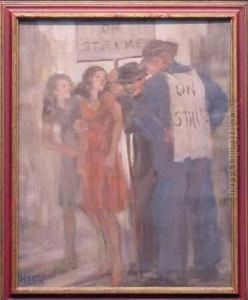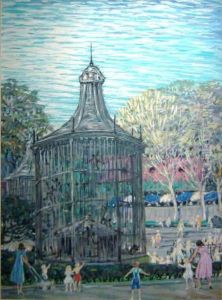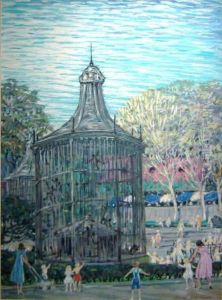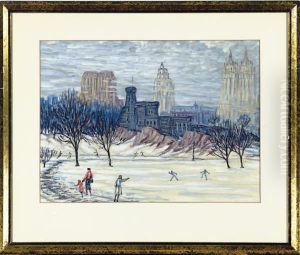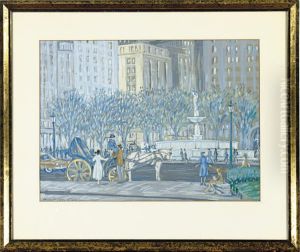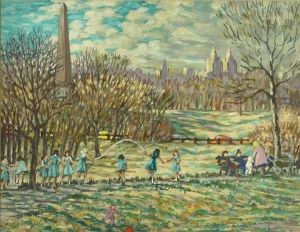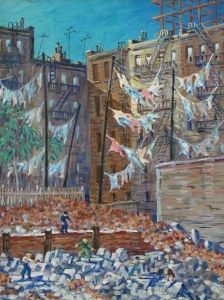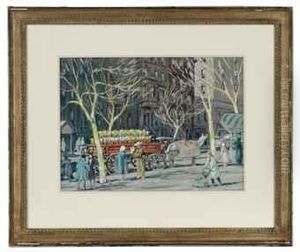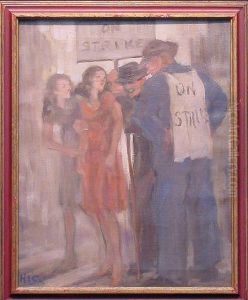Henry Ives Cobb Paintings
Henry Ives Cobb was an American architect who is best remembered for his significant contributions to the architecture of Chicago. Born on August 19, 1859, in Brookline, Massachusetts, Cobb developed an interest in architecture at an early age. He pursued his architectural studies at the Massachusetts Institute of Technology and also studied at the École des Beaux-Arts in Paris, which was the premier architectural school in the world at the time.
Cobb began his professional career in the 1880s in the city of Chicago, which was rapidly rebuilding after the Great Chicago Fire of 1871. He established his own firm, Cobb and Frost, with partner Charles S. Frost in 1882. The firm was responsible for the design of numerous buildings in the Chicago area, many of which were designed in the Richardsonian Romanesque style, characterized by massive stone walls and Romanesque motifs.
One of Cobb’s most notable projects was the original Chicago Athletic Association Building, which is considered a fine example of Venetian Gothic architecture. He was also involved in the design of the Newberry Library and the Chicago Federal Building, showcasing his versatility and command of different architectural styles.
In 1895, Cobb moved to New York City, where he continued to practice architecture and designed several buildings. Despite the shift in location, his impact on Chicago's architectural landscape remained significant. He was known for his meticulous attention to detail, his ability to adapt to various architectural styles, and his role in shaping the urban aesthetic of Chicago during a period of intense growth and transformation.
Henry Ives Cobb passed away on March 27, 1931, in New York City. His legacy endures through the buildings he designed, many of which are still standing and continue to be used and admired for their architectural beauty and historical significance. Cobb's work contributed to the development of American architecture during a time when the nation was seeking to define its architectural identity.
